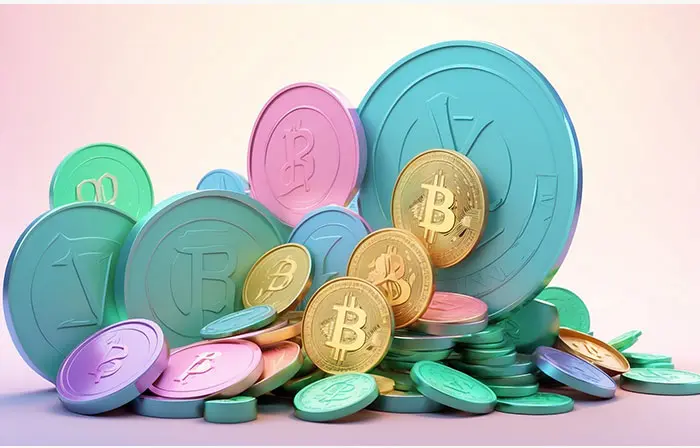Blockchain Backs the Future of Innovation…….

Blockchain technology is rapidly transforming various industries, from finance to healthcare, logistics, and even entertainment. But what is blockchain, and why is it considered the backbone of innovation? In this article, we’ll explore how blockchain works, its far-reaching applications, and the challenges it faces. By the end, you’ll understand how this technology is driving us toward a future of automation, security, and decentralization.
What is Blockchain? A Brief Overview
At its core, blockchain is a distributed ledger technology that allows data to be stored across a network of computers, known as nodes. These nodes work together to verify transactions and maintain the integrity of the system. Since no central authority controls the data, blockchain is considered decentralized, making it resistant to tampering, fraud, or unauthorized changes. Think of it as a digital version of a ledger book, but with every transaction permanently recorded, verifiable by anyone on the network.
Blockchain Beyond Cryptocurrencies: What’s the Big Deal?
Blockchain is often associated with cryptocurrencies like Bitcoin and Ethereum. While these digital currencies were the first to leverage blockchain technology, the possibilities extend far beyond them. Blockchain has the potential to reshape industries by enabling secure, transparent, and tamper-proof transactions. It’s becoming the backbone for innovations in supply chain management, finance, healthcare, and more. As businesses realize its potential, the world is quickly transitioning from blockchain for crypto to blockchain for everything.
The Key Components of Blockchain
The magic of blockchain lies in its structure. Three key components make this technology revolutionary:
Decentralized Networks – Unlike traditional systems where data is controlled by a central authority, blockchain operates on a peer-to-peer network, making it secure and transparent.
Ledger – Each transaction or data entry is stored in “blocks,” which are linked or “chained” to previous entries, ensuring a chronological, immutable record.
Cryptographic Security – Blockchain uses cryptography to secure data, ensuring that only authorized users can modify records.
How Blockchain Backs Data Security and Transparency
Data breaches and hacking incidents are becoming all too common. Blockchain provides a solution to this problem by offering a more secure way to store and transmit information. In traditional databases, a single breach can compromise the entire system. But with blockchain, each block of data is cryptographically secured and linked to the one before it, making it nearly impossible to alter without detection. Furthermore, blockchain allows complete transparency: anyone on the network can verify the authenticity of data or transactions, which has massive implications for industries like healthcare, where patient data security is paramount.
Blockchain and Smart Contracts: Automating the Future
One of the most exciting applications of blockchain is smart contracts. A smart contract is a self-executing contract where the terms of the agreement are written directly into code. These contracts automatically execute actions (like sending money) when predefined conditions are met. Since smart contracts remove the need for middlemen (like lawyers or banks), they can streamline business processes, reduce costs, and increase efficiency. Industries such as real estate, insurance, and even entertainment are leveraging smart contracts to create more reliable, automated systems.
Blockchain in Supply Chain Management
Supply chain transparency is another area where blockchain is making a mark. Whether it’s tracking food from the farm to the grocery store shelf or verifying the authenticity of luxury goods, blockchain offers a way to trace every step of a product’s journey. This transparency not only helps companies ensure the quality of their products but also enables consumers to verify the ethical and sustainable sourcing of goods.
The Role of Blockchain in Decentralized Finance (DeFi)
The financial sector is being disrupted by blockchain technology through decentralized finance or DeFi. DeFi refers to financial systems that operate without traditional banks or financial institutions, relying instead on blockchain to facilitate transactions. This opens up new opportunities for lending, borrowing, and investing in a decentralized way. Users retain control of their assets, eliminating the need for intermediaries and reducing the costs associated with traditional banking.
Blockchain for Intellectual Property and Digital Rights
Artists, creators, and businesses often struggle with protecting their intellectual property (IP) in the digital age. Blockchain provides a way to securely store and verify ownership of digital creations. Using blockchain, creators can timestamp their work and prove they were the source. This is also useful for digital rights management (DRM), ensuring that content creators are fairly compensated when their work is shared or sold.
Challenges and Criticisms of Blockchain Technology
Despite its potential, blockchain is not without its challenges. Scalability remains a major issue, as the more transactions added to the chain, the more data nodes have to process. Additionally, the energy consumption of blockchain networks, especially in proof-of-work systems like Bitcoin, is another criticism. Regulatory hurdles also present challenges as governments and institutions struggle to adapt to decentralized, borderless systems.
The Future of Blockchain: Innovations and Emerging Trends
The future of blockchain looks promising, with advancements being made in areas like decentralized applications (dApps), tokenization, and enterprise blockchain solutions. Tokenization, in particular, allows assets like real estate or art to be divided into digital tokens that can be traded on blockchain platforms. As technology evolves, we can expect blockchain to become a foundational technology for the digital economy, empowering new business models, secure systems, and unprecedented transparency.
Conclusion:
Blockchain is more than just a buzzword. It’s a transformative technology with the potential to revolutionize industries, enhance security, and automate processes. While challenges remain, the innovations spurred by blockchain are driving us into an exciting, decentralized future.



One Comment